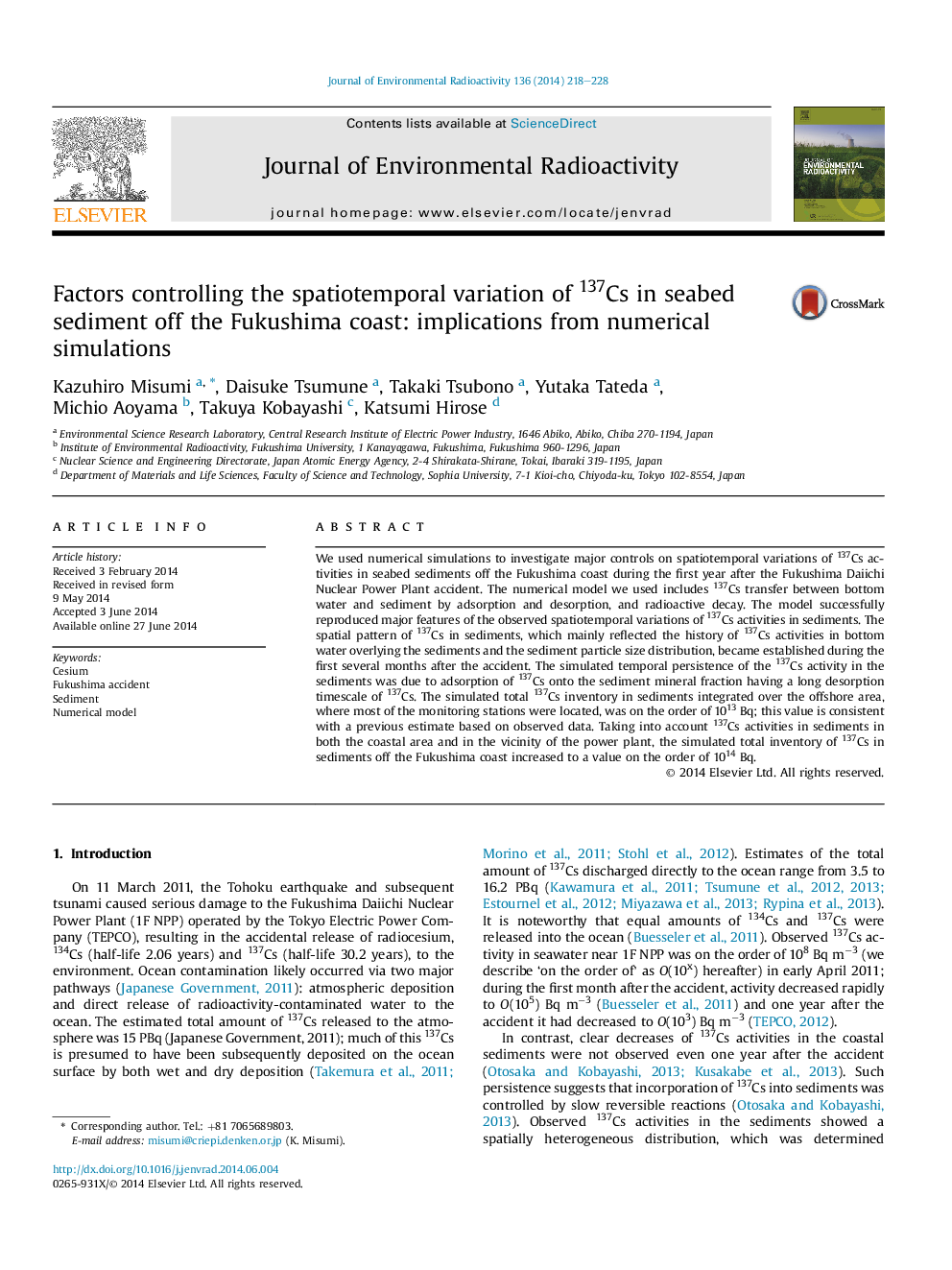| Article ID | Journal | Published Year | Pages | File Type |
|---|---|---|---|---|
| 8083112 | Journal of Environmental Radioactivity | 2014 | 11 Pages |
Abstract
We used numerical simulations to investigate major controls on spatiotemporal variations of 137Cs activities in seabed sediments off the Fukushima coast during the first year after the Fukushima Daiichi Nuclear Power Plant accident. The numerical model we used includes 137Cs transfer between bottom water and sediment by adsorption and desorption, and radioactive decay. The model successfully reproduced major features of the observed spatiotemporal variations of 137Cs activities in sediments. The spatial pattern of 137Cs in sediments, which mainly reflected the history of 137Cs activities in bottom water overlying the sediments and the sediment particle size distribution, became established during the first several months after the accident. The simulated temporal persistence of the 137Cs activity in the sediments was due to adsorption of 137Cs onto the sediment mineral fraction having a long desorption timescale of 137Cs. The simulated total 137Cs inventory in sediments integrated over the offshore area, where most of the monitoring stations were located, was on the order of 1013 Bq; this value is consistent with a previous estimate based on observed data. Taking into account 137Cs activities in sediments in both the coastal area and in the vicinity of the power plant, the simulated total inventory of 137Cs in sediments off the Fukushima coast increased to a value on the order of 1014Â Bq.
Related Topics
Physical Sciences and Engineering
Energy
Nuclear Energy and Engineering
Authors
Kazuhiro Misumi, Daisuke Tsumune, Takaki Tsubono, Yutaka Tateda, Michio Aoyama, Takuya Kobayashi, Katsumi Hirose,
